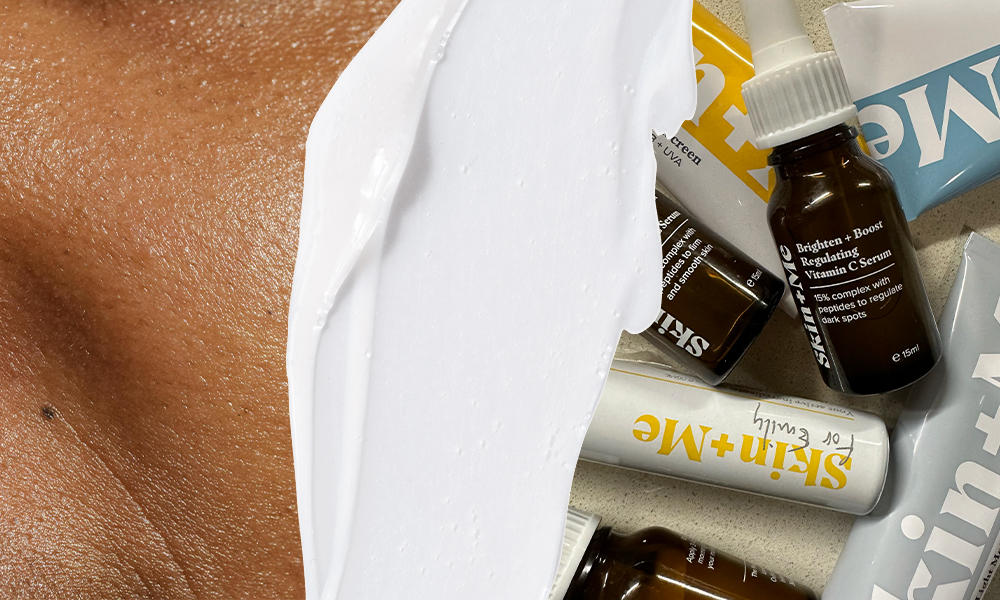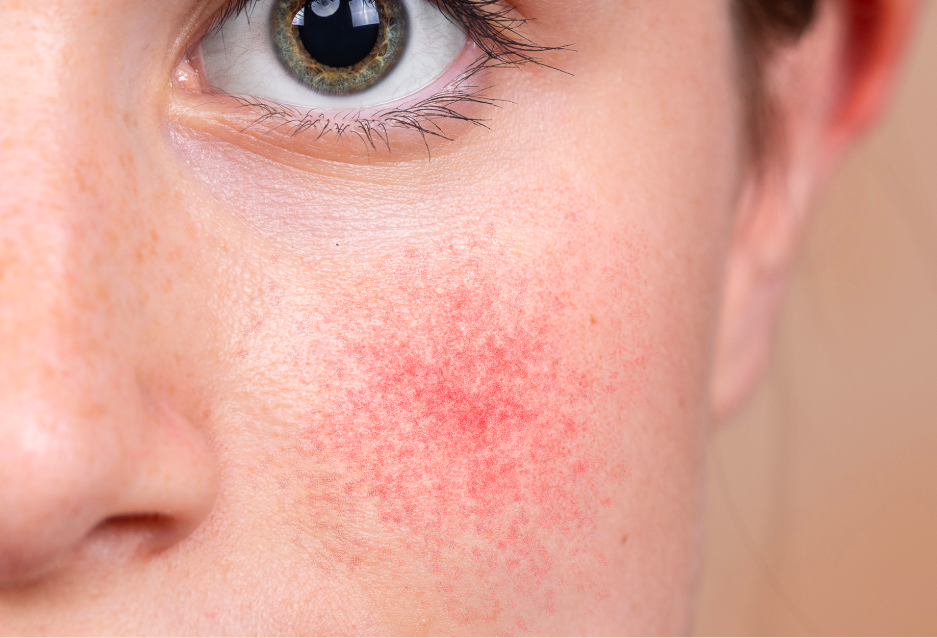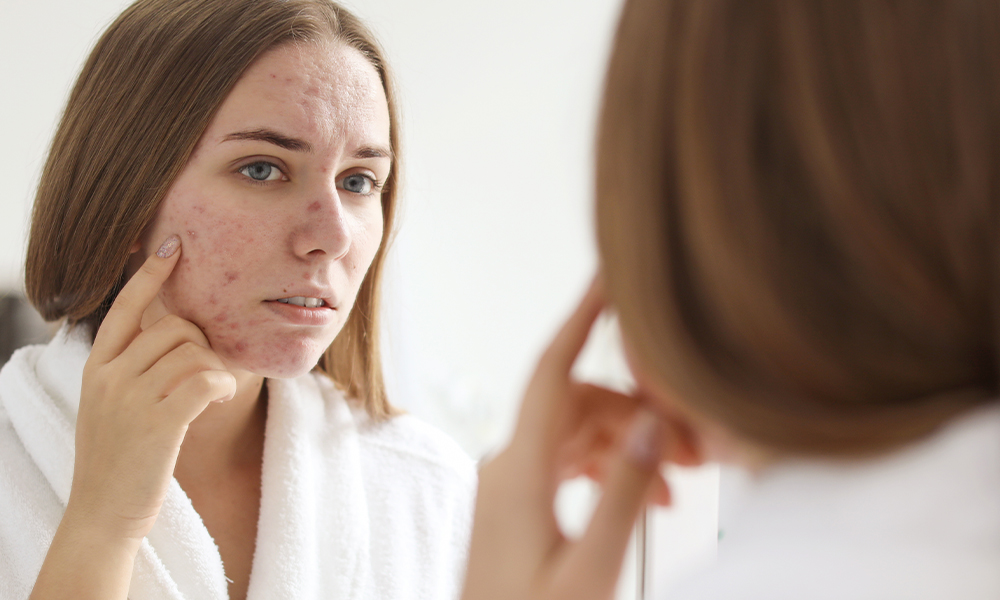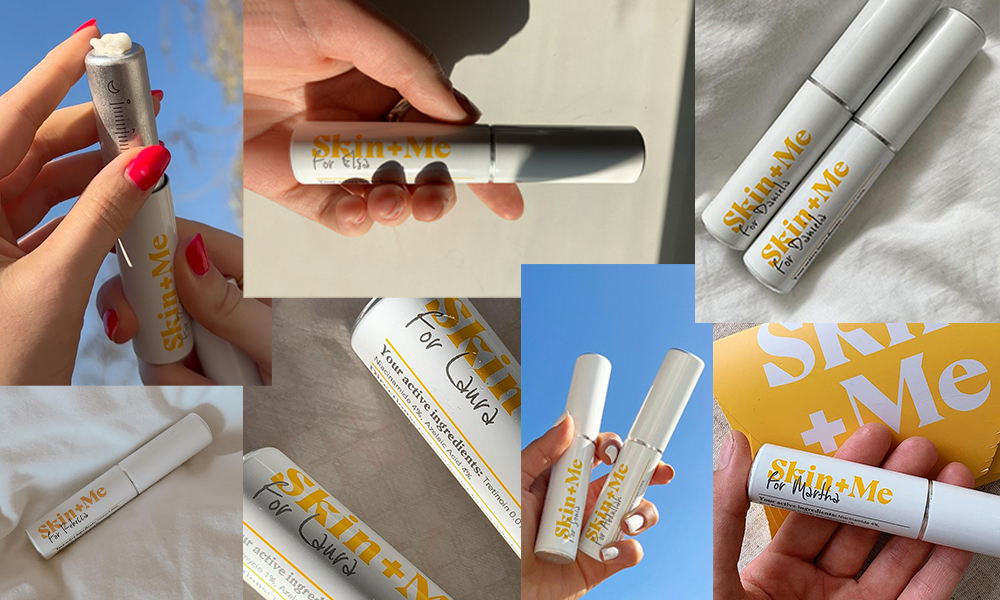Rosacea Awareness Month: Five Things to Know About Rosacea

Link to share article here:
Ask A Clinician: What Happens To Your Skin When You Transition?
Authors: Hannah Costello and Neelam Dalal
Here at Skin + Me, we promote inclusivity and believe that skincare is not limited to any gender – everyone deserves healthy, happy skin that boosts their confidence. So, to celebrate Trans Day of Visibility, on 31st March, let’s dive into understanding and treating skin going through the transition process.
Transition journeys and hormone therapy
The process of transitioning, when individuals align their physical appearance with their gender identity, can have a significant impact on various aspects of the body, including the skin.
Hormone therapy is often chosen by some trans individuals as part of their transition journey. This form of treatment involves the administration of hormones that are consistent with an individual’s gender identity.
While it is essential to recognise that each person’s experience may vary due to unique factors such as genetics and individual health, there are general patterns in how hormone therapy can impact the skin. Understanding these changes and maintaining a good skincare routine during transition will help to support healthy skin during hormonal fluctuations.
How does hormone therapy affect the skin?
Oestrogen hormone therapy
For male to female (MTF) transitions involving oestrogen hormone therapy, there are several potential effects on the skin.
Oestrogen has been found to increase hydration levels within the skin, as well as increasing skin elasticity. The reduction in testosterone may reduce oil production in the sebaceous glands, which can help issues related to excessive oiliness or acne breakouts.
Some individuals may also experience heightened sensitivity in their skin as a result of increased oestrogen levels. This sensitivity could make certain skincare products or treatments potentially irritating or uncomfortable. In addition, due to the drop in testosterone and therefore a decrease in oil levels, it is normal to experience an increase in dry skin.
Another skin condition that may also arise during MTF transition is melasma, a pigment disorder where flat, dark patches appear on the skin. Melasma triggers are still relatively unknown, but we do know that it is interlinked with changes in oestrogen levels.
Testosterone hormone therapy
Some female to male (FTM) transitions involve testosterone hormone therapy. Testosterone can lead to an increase in sebum production, and this may result in an increase of oiliness and risk of developing acne.
Small studies suggest that acne severity often peaks in the first six months of testosterone therapy. For example, one study of 21 transmasculine adults found 94% had facial acne after four months of testosterone therapy. However, research also shows that it may gradually improve over one to two years, with one study finding that after long‐term testosterone treatment, most participants had no or mild acne lesions.
Increased testosterone can also lead to an increase in facial hair growth, so learning how best to care for your skin during this time can also help to reduce breakouts and irritation to the skin. Learning to shave can also be an important way for some people to affirm their gender identity.
How to shave comfortably
- Prepare – Before you start shaving, make sure your skin is clean and damp. You might find it helpful to shave after a warm shower, as the steam will soften your hair and open up the pores, making the process easier.
- Choose the right tools – Use a high quality razor. Consider using a shaving cream or gel to help lubricate your skin and hair, reducing the risk of irritation.
- Shaving direction – Shave in the direction of hair growth to reduce the risk of ingrown hairs. For most people, this means shaving downward on the cheeks and neck. However, the direction might vary in different areas of the face, so pay attention to growth patterns.
- Moisturise – After you’ve finished shaving, rinse your face with cool water to close the pores, then apply a soothing moisturiser to keep your skin hydrated and reduce post-shave irritation.
Building a skincare routine during your transition
As discussed, the side effects of hormone therapy can show up on the skin and present as acne, pigmentation and uneven texture. So, how can you treat these skin concerns, and how should you adapt your skincare routine?
Transitioning can be hard enough to deal with, and having to tackle acne as well can be challenging, but active ingredients can help. Clindamycin is a prescription-only antibiotic used to soothe and calm angry spots and promote skin healing. Tretinoin is a retinoid that is great for helping with acne, by increasing cell turnover as well as minimising the appearance of pores and uneven skin texture. Niacinamide, a derivative of vitamin B3, regulates oil production, which helps keep acne under control. Depending on how bad the breakouts get, some people may benefit from taking tablets to help further to clear their skin.
Melasma can be hard to treat, but using active ingredients such as hydroquinone and tretinoin can help to fade hyperpigmentation. Regularly applying SPF 50 sunscreen year round will help to improve results and stop relapses.
Maintaining a consistent skincare regime during your transition can also help support healthy skin throughout hormonal changes. Cleansing the skin twice daily with a gentle cleanser and moisturising regularly will help maintain hydration levels. Additionally, using a broad-spectrum sunscreen of at least SPF 50 is essential to safeguard against potential damage caused by UV radiation.
What is chest binding?
Chest binding is commonly used by transgender individuals, commonly those assigned female at birth, as well as non-binary individuals to flatten the appearance of their breasts or chest, creating a more masculine or gender-neutral silhouette.
Binding is a personal choice which can help individuals feel more comfortable with their bodies by aligning their physical appearance with their gender identity. However, it’s worth being aware of the following potential effects and how to minimise them by binding with care:
- Skin irritation, which can occur with improper or prolonged binding.
- Reduced airflow, leading to increased moisture and heat accumulation. This environment can promote the growth of bacteria and fungi, potentially causing skin infections.
- Muscle and rib discomfort, which might even cause long term issues with muscle and rib health if binding too tightly or for extended periods.
- Bruising and swelling, if binding too tightly or using improper materials.
- Breathing difficulties, if the binding is done too tightly.
Tips for safe chest binding
If you decide to bind your chest, it’s important to prioritise your health and safety. Here are some tips to minimise the negative effects.
- Use specialised binding products or materials designed for chest binding, such as commercial binders. Avoid using products such as duct tape or other makeshift methods, as they can increase the risk of injury.
- Choose the right size and make sure your binder fits properly without being too tight. Avoid excessive compression that could lead to breathing difficulties or discomfort
- Limit the duration and avoid binding for extended periods. Give your body breaks from binding to allow your skin and muscles to recover.
- Maintain good hygiene by keeping the binding area clean and dry to minimise the risk of skin infections. Wash the binder regularly according to the manufacturer’s instructions.
- Listen to your body – if you experience pain, discomfort, difficulty breathing or notice any skin issues, it is important to stop binding and consult a healthcare professional.
- Incorporate gentle stretches and movements to help relieve muscle tension and encourage blood circulation.
What is tucking?
Tucking refers to a practice used by some transgender individuals, particularly those assigned male at birth, where they arrange their genitalia to create a flatter appearance.
Tucking can have the following effects on the skin, which can be reduced through safe practices:
- Skin irritation may occur due to the tucked genitalia and clothing. Using barrier creams, powders or fabrics that reduce friction can help minimise irritation.
- Allergic reactions can be caused by certain fabrics. It is important to be aware of any potential allergic reactions and choose materials that are hypoallergenic.
- Tucking can create a warm and moist environment, which can lead to bacterial growth and fungal growth. Regularly changing out materials and keeping the area clean can help to mitigate these risks.
- Tucking too tightly can potentially restrict blood circulation to the genital area, which can lead to discomfort, numbness and and even more serious health issues if not addressed properly.
Everyone’s body is unique, and what works for one person might not work for another. Prioritising your health, comfort and well-being is crucial.
Final thoughts
Transitioning can be a hard time for your skin, as each transitioning journey is different and so is your skin – understanding what causes these changes is key to your comfort. A strong routine, a safe approach and the right active ingredients will not only help your skin look better, but can also help to boost your self-confidence during this time.
References
- https://www.ncbi.nlm.nih.gov/pmc/articles/PMC6497076/
- https://dermnetnz.org/topics/transgender-patients-and-their-skin#:~:text=For%20transgender%20women%20patients%2C%20common,despite%20optimised%20hormonal%20therapy%20%5B13%5D
- Krakowsky, Y., Potter, E., Hallarn, J., Monari, B., Wilcox, H., Bauer, G., Ravel, J., & Prodger, J. L. "The Effect of Gender-Affirming Medical Care on the Vaginal and Neovaginal Microbiomes of Transgender and Gender-Diverse People." Frontiers in Cellular and Infection Microbiology
- Huang, C., Gold, S., Radi, R., Amos, S., & Yeung, H. "Managing Dermatologic Effects of Gender-Affirming Therapy in Transgender Adolescents." Adolescent Health, Medicine and Therapeutics Niaz, F., Shams, N., Meraj, L., Ahmed, S., Ahmed, N., & Sheikh, I. "Skin Changes in Newly Diagnosed Cases of Hypothyroidism." Journal of Rawalpindi Medical College2.
- Yorozuya, W., Ichihara, K., Yamana, A., & Masumori, N. "CLINICAL OUTCOMES OF GENDER AFFIRMING SURGERY FOR GENDER DYSPHORIA/INCONGRUENCE: A SINGLE-INSTITUTE EXPERIENCE." The Japanese Journal of Urology
New to Skin + Me? Get your first month of personalised skincare for £4.99 with promo code DOSE – complete our quick consultation here.
Looking for a routine refresh? Add the Dream Routine to your Skin + Me subscription.
In need of a restock? Head to The Skincare Shop for one-off purchases of your Routine Essentials.



